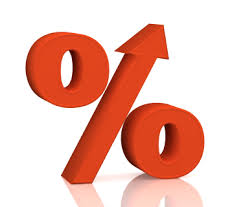
It has long been anticipated that the Federal Reserve would be raising the interest rate in the foreseeable future, and last month it finally actualized. Federal Reserve Chairwoman Janet Yellen announced in December that the interest rate would increase from 0-0.25 percent to 0 .25-0.50 percent. While not a large increase, the raise will still impact a great portion of industries across the US. How will the recent increase affect US farmers, landowners, and the agriculture industry?
First, and most obviously, the hike will increase the cost of borrowing money—something with which most farmers are well acquainted. With the current rate increase, producers borrowing money based on prime would pay 0.25 percent more interest annually on their short-term loans, including operating and vehicle loans.
Secondly, the rate increase will add to the downward pressure on the price of farmland.
Lastly, interest rate increases may also contribute to a stronger US dollar. For those in agriculture, this translates to less competitive commodity prices in the world market.
According to Jeffery Dorfman, an agricultural economist at the University of Georgia, one percentage point rise in the interest rate can translate into as much as a 6 percent drop in commodities prices. On the low end, such a move could push prices down by 2 percent, which translates into “a dime or so per bushel for corn and wheat and maybe a quarter for soybeans,” he says.
While that information is sobering, Dorfman is quick to reassure farmers.
“I would not expect the inevitable increase in interest rates to be positive for commodity prices, but the magnitude of the negative impact should be relatively small and fairly evenly spread across the major row crops.”
With all this in mind, it’s important to take into account that more increases are on the horizon. In September of 2015, Yellen said that the rate will likely rise to 1.5 % by late 2016, 2.5 % in late 2017, and 3.5 % in 2018.
The good news is that the very gradual increases will soften the blow for most producers, depending upon their current financial situation.
What is the best course of action for farmers and landowners in response to rising interest rates? It’s best to continually strive to make improvements in efficiency and productivity, both in the fields and financially. Being able to provide detailed cost projections and yield estimates to your lender will put you in a much better position to negotiate better interest rates.
Creighton University economics professor Ernie Goss has his own suggestion.
“If I were a farmer, I would protect myself against rising short-term rates by locking in these very low long-term rates. I would take out equity on the farm, understanding that I may be using the funds for operating,” Goss said.
Do you have concerns about what the interest rate hike will mean for your farming operation? Feel free to contact us with your concerns. We are glad to work with you to keep your operation running strong.
Source consulted: Anderson, Ken. “The Impact of Higher Interest Rates on Agriculture.” Brownfield Ag News. Brownfield Ag News for America. 03 Nov. 2016. Web. 21 Jan. 2016. Howard, Fran. “How a Rise in Interest Rates Could Affect Farmers.” AgWeb.com. Farm Journal. 05 Aug. 2015. Web. 21 Jan. 2016. Rice, Allison. “If Interest Rates Rise, What Happens to Crop Prices?” Agweb.com. Farm Journal. 15 Dec. 2015. 21 Jan. 2016.


 It’s January, and as many are setting their personal goals for 2015, farmers and agriculture economists are also keenly interested in what the new year will bring for ag producers. With 2014’s lower commodity prices in mind, farmers are paying close attention to rumors of rising interest rates in 2015.
It’s January, and as many are setting their personal goals for 2015, farmers and agriculture economists are also keenly interested in what the new year will bring for ag producers. With 2014’s lower commodity prices in mind, farmers are paying close attention to rumors of rising interest rates in 2015.